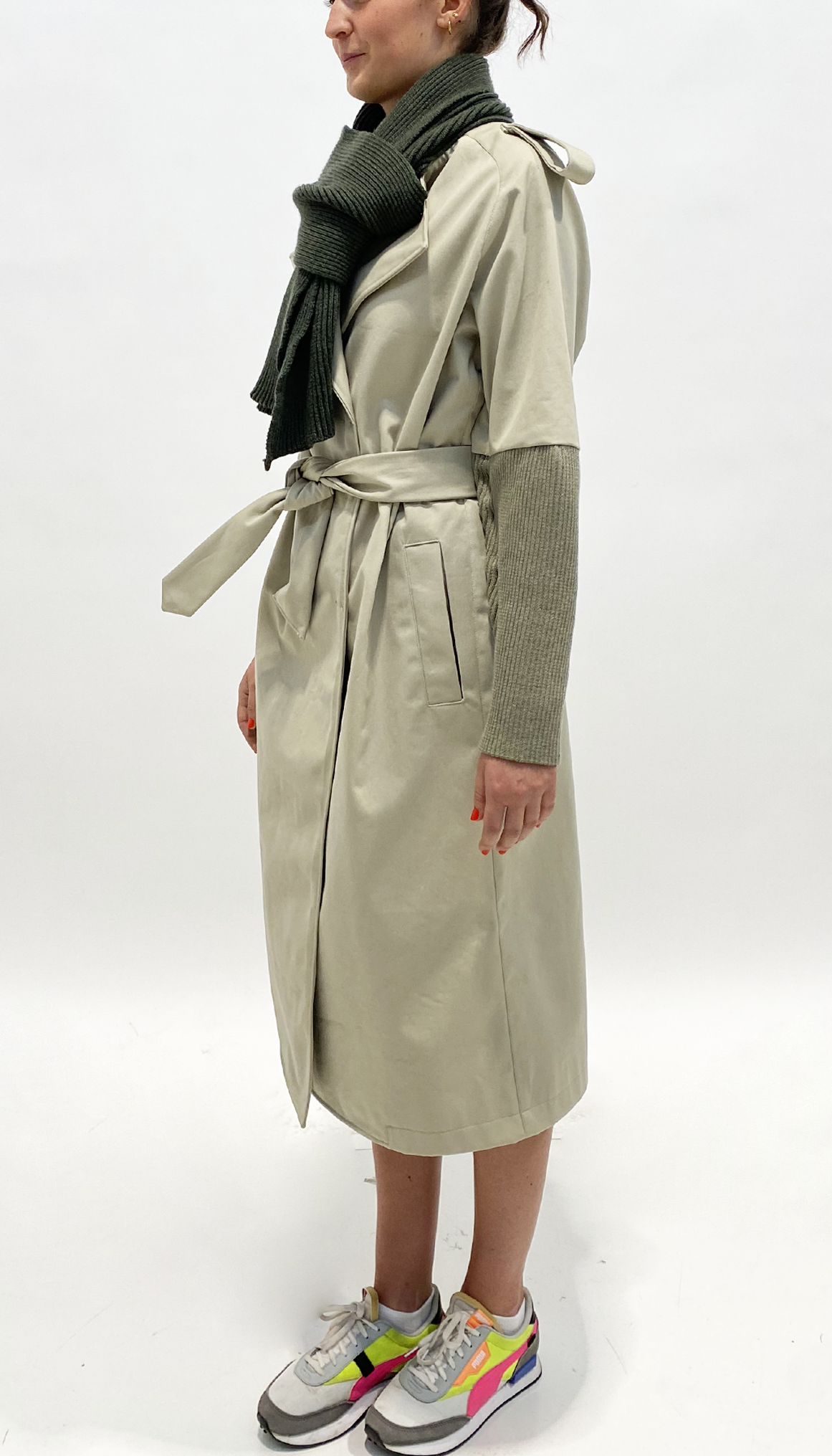
The message of the project
The Hybrid project balances sustainable innovation and functional design. It builds a conversation between science and fashion. The result is new outerwear design propositions produced through transdisciplinary partnerships between designers and material scientists, with the goal of reducing the environmental impact of the water-proof industry.
This collaborative project intends to eliminate harmful fluorinated chemicals used in the production of water-proof fabrics. It also utilises new material sources that have not yet been explored.
The idea behind the project
When consumers are pressed for time, stressed, cold, or wet, why shouldn't a coat provide them with the confidence to confront their challenges? Outerwear constructed of synthetic fabrics meets the requirement to protect consumers from the elements. But did you know that not only do synthetic materials still account for 65% of all fibres manufactured annually, but they also take more than a century to biodegrade? And, because, in places like London or Amsterdam, rainy days account for an average of 170 days per year, people choose to protect themselves by wearing blended petrochemical-based textiles. Because of their diverse raw material sources, these materials are more difficult to recycle. Plastic microfilaments are also lost into the environment and enter the body through the skin when worn. Furthermore, waterproof clothing is covered with a durable water-repellent coating consisting of hazardous fluorinated chemicals.
The Hybrid Project was founded to remove these hazardous chemicals and introduce alternative material options for water-proof clothing.
It aims to bring together nature, technology, and design. From a design standpoint, it aspires to facilitate the transition between customers' everyday responsibilities with thoughtfully created clothing that provides the user with improved mobility and practical comfort. It begins by considering pattern construction and how adjusting the design can achieve a mix of practicality and aesthetics.
The Hybrid Project also seeks to examine the substance from the standpoints of nature and technology. Merging regenerative materials with modern technology can lead to more sustainable solutions. Nest-tex’s unique nano-sized water-proof membrane was made with specific polymers and bio-polymers. The membrane was then laminated onto selected textiles, such as cotton and biodegradable nylon. The recyclability and biodegradability of the final materials were tested and compared with the desired mechanical strengths. The project's continued research and development are focused on further improving the environmental aspects of the water-proof industry.
The collaboration between Aibryd (Izadora Verlic), Sara Tolentino, and Nest-tex (Peter Emri) offers a transdisciplinary forum to investigate new material solutions together. The partnership resulted in water-resistant clothing composed of materials that are healthier for the wearer and less taxing on the environment.
What next?
Within the WORTH Project, the partnership explored the application of various materials to achieve environmentally friendly, water-proof textiles for fashion applications.
The result is a capsule collection of outerwear pieces introducing a sustainable concept in water-proof clothing.
From initial prototypes and tests, the project is now progressing to prepare the technology to scale for mass production, with solutions to benefit the larger industry. The Nest-tex fabric might be used in numerous designs and industries: military, medical, sporting, and work-fashion wear. The collaboration can benefit consumers, industries, and the environment.
- Project locations
- SloveniaItalySlovenia
- Projects Edition
- WORTH Partnership Projects II
- Project Call
- 1st Call Projects
- Project Sector
- Textile and clothing
- Project Challenge
- New European Bauhaus
Stakeholders
Coordinators
Izadora Verlic - Aibryd
- Address
- Slovenia
Sara Tollentino - Freelance Product developer
- Address
- Italy
Peter Emri - Nest-tex
- Address
- Slovenia


